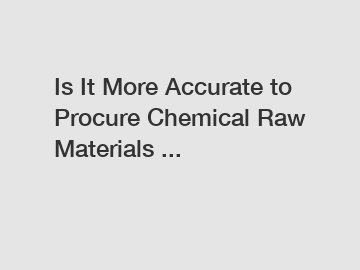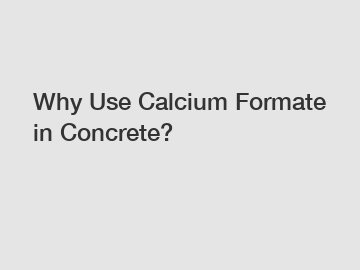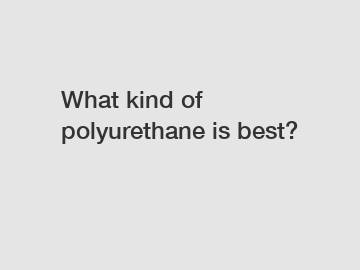Within the vast realm of surfactants, non-ionic surfactants hold special importance due to their unique characteristics.
Unlike ionic surfactants that carry a charge (either positive or negative) in their head groups, non-ionic surfactants lack an electrical charge. This absence of charge makes them particularly useful in formulations where compatibility with various substances is crucial.
Non-ionic surfactants excel at adjusting hydrophilic-lipophilic balance (HLB), which determines their solubility in water or organic solvents.
In upcoming sections, we will delve deeper into the structure and functionality of non-ionic surfactants while exploring their versatile applications across multiple industries.
Understanding Surfactants
Definition and Properties of Surfactants
Surfactants, short for surface-active agents, are a category of chemical compounds that possess unique properties crucial in various industries. These compounds play a fundamental role in altering the surface tension between two substances, such as water and oil.
Structural diagram of hydrophilic group and hydrophobic agent of surfactant
At their core, surfactants consist of molecules with both hydrophilic (water-attracting) and hydrophobic (water-repellent) regions. This dual nature enables surfactants to reduce the interfacial tension between immiscible liquids or between liquids and solids.
The properties of surfactants allow them to function as excellent emulsifiers, detergents, wetting agents, foaming agents, and dispersants. Emulsification occurs when surfactant molecules surround droplets of one liquid (e.g., oil) in another liquid (e.g., water), creating a stable mixture or emulsion.
As detergents, they aid in breaking down grease and dirt by enabling the dispersion of non-polar substances into aqueous solutions. Surfactants also enhance wetting by reducing the contact angle between a liquid and solid surface, therefore assisting liquids in spreading evenly over solids.
Classification of Surfactants based on Charge: Ionic and Non-Ionic
Surfactants can be divided into two main categories: ionic and non-ionic surfactants. The key difference between them lies in their electrical charge when dissolved in water or other solvents.
Ionic surfactants
Ionic surfactants have charged groups within their molecular structure that break apart into positively charged (cationic) or negatively charged (anionic) ions when dissolved in water.
These ionic surfactants are commonly used in cleaning products, personal care items, and industrial applications. In contrast, non-ionic surfactants do not have an electrical charge in their head groups.
Non-ionic surfactants
Instead of relying on electrostatic interactions, non-ionic surfactants work through hydrogen bonding and Van der Waals forces. This allows them to be compatible with a wider range of pH levels and exhibit excellent stability across different temperatures.
Non-ionic surfactants are widely used in various industries because they are gentle on the skin and can be combined with other ingredients in personal care products.
Exploring Non-Ionic Surfactants
The Fascinating World of Non-Ionic Surfactants
One defining characteristic of non-ionic surfactants is their hydrophilic-lipophilic balance (HLB). The HLB value indicates the balance between the hydrophilic (water-loving) and lipophilic (oil-loving) parts of the surfactant molecule.
This balance determines the solubility and emulsifying properties of the non-ionic surfactant, making it suitable for different applications. For example, non-ionic surfactants with low HLB values are more oil-soluble and are often used in products such as emollients and lubricants, while those with higher HLB values are more water-soluble and find utility in detergents, cleaning agents, and personal care products.
Their lack of charge allows them to interact effectively with various substances without causing unwanted reactions or irritations. This versatility makes them compatible with both polar solvents like water and organic solvents like oil, enabling efficient cleaning or emulsification depending on the formulation requirements.
Incredible Utility Across Industries
In the realm of cleaning agents and detergents, these surfactants excel at removing dirt, grease, and stains from surfaces.
Nonionic Surfactants used as Detergents
Their unique structure allows them to lower the surface tension of water, facilitating the penetration and lifting of unwanted substances from different materials. Non-ionic surfactants also provide excellent wetting properties, ensuring thorough coverage and even distribution of the cleaning solution.
In personal care products, non-ionic surfactants are highly valued for their mildness on the skin. Their lack of charge makes them less likely to cause irritation or disrupt the delicate balance of the skin’s natural oils.
Moreover, they serve as emulsifying agents in creams, lotions, and other cosmetic formulations, helping to stabilize these products and ensure consistent texture and performance.
Structure and Functionality of Non-Ionic Surfactants
Molecular Structure and Arrangement
At the core of non-ionic surfactants lies the hydrophilic head group, which is responsible for their solubility and interaction with water molecules.
Hydrophilic Head
Ethoxylated alcohols, ethoxylated fatty acids, and other similar compounds are common examples of non-ionic surfactants. The hydrophilic head group consists of polar functional groups such as -OH (hydroxyl), -COOH (carboxylic acid), or -NH (amine) that have an affinity for water molecules.
If you want to learn more, please visit our website Surface-Active Agents Supplier.
Featured content:Questions You Should Know about butyric acid benefitsHEC vs HPMC: Picking the Perfect Cellulose for SuccessKey Questions to Ask When Ordering cas: 96-31-1 white powderWhat is the purpose of whole body cryotherapy?Rutile vs. Anatase Titanium dioxide (TiO2)Our Picks for the Best Online Pharmacies in 2024How Does Silane Coupling Work?
This allows the non-ionic surfactant molecules to form stable solutions in aqueous environments.
Due to their unique molecular arrangement, non-ionic surfactants can reduce this tension, enabling them to disperse uniformly in both polar (water-based) and nonpolar (oil-based) media.
Hydrophobic Tail
Complementing the hydrophilic head group is the hydrophobic tail found in non-ionic surfactants. This tail typically consists of long alkyl chains or fatty acid chains that have minimal affinity for water but exhibit strong attractions towards oil or organic compounds. These hydrophobic tails allow the non-ionic surfactant molecules to interact with oils at the surface level, facilitating emulsification and dispersion.
When introduced into a system containing both water-soluble and oil-soluble components, such as a cleaning solution or personal care product formulation, non-ionic surfactants align themselves at the interface of the two phases. The hydrophilic head group remains in contact with water molecules, while the hydrophobic tail immerses itself into the oil or organic compounds.
This unique arrangement enables non-ionic surfactants to stabilize emulsions, ensuring that oil and water components remain uniformly mixed, rather than separating over time.
The structure and functionality of non-ionic surfactants make them a preferred choice in various industries where cleaning, personal care products, and other surface-related applications are crucial.
Applications of Non-Ionic Surfactants
Industrial Applications
Enhancing Cleanliness: The Power of Non-Ionic Surfactants in Cleaning Agents and Detergents
Non-ionic surfactants play a pivotal role in the formulation of various cleaning agents and detergents, owing to their exceptional ability to remove dirt and stains effectively.
When these non-ionic surfactants are added to cleaning solutions, they function by reducing the surface tension between the water and the substance being cleaned.
This reduction in surface tension allows the solution to wet surfaces more readily, enabling deeper penetration and emulsifying dirt particles. As a result, when applied to surfaces, non-ionic surfactant-based cleaning agents can efficiently lift away grease, oils, grime, and other stubborn contaminants.
One such versatile non-ionic surfactant is Sodium C14-16 olefin sulfonate, which exhibits high cleaning efficiency and excellent foaming properties.
Moreover, non-ionic surfactants offer distinct advantages over other types of surfactants commonly employed in cleaning formulations. Compared to anionic surfactants that carry a negative charge or cationic surfactants with a positive charge, non-ionic surfactants exhibit greater versatility due to their ability to remain stable under various pH conditions.
This stability ensures optimal performance across a broad spectrum of cleaning tasks. Additionally, their mildness on surfaces makes them ideal for use on delicate materials such as fabrics and metals without causing damage or corrosion.
Cosmetics and Personal Care Products
Emulsification for Elegance: Non-Ionic Surfactant’s Role in Personal Care Products
The realm of personal care products greatly benefits from the emulsifying properties offered by non-ionic surfactants.
They enable the formulation of stable emulsions that combine water-soluble ingredients with oils or other hydrophobic substances commonly found in creams, lotions, and various cosmetic products.
By creating stable emulsions, non-ionic surfactants ensure uniform distribution of ingredients throughout the product, imparting a smooth and luxurious texture that feels pleasant to the touch. Furthermore, non-ionic surfactants exhibit remarkable mildness on the skin due to their lack of charge.
This attribute is particularly desirable in personal care products as it minimizes potential irritation or sensitization reactions that could be caused by the use of anionic or cationic surfactants. Non-ionic surfactant-based formulations provide a gentle cleansing experience and maintain the natural moisture balance of the skin, making them suitable for individuals with sensitive skin or those seeking milder alternatives in their beauty regimen.
Agriculture
Formulating Crop Protection: Non-Ionic Surfactants in Agricultural Applications
Non-ionic surfactants find valuable application in agriculture as formulation additives for pesticides and herbicides. These additives enhance the performance of these agrochemicals by improving their spreading and wetting capabilities on plant surfaces. When sprayed onto crops, non-ionic surfactant-based formulations facilitate uniform coverage on leaves, ensuring even distribution of active ingredients for effective pest control.
Additionally, non-ionic surfactants support enhanced adherence to leaf surfaces and reduce run-off caused by rainfall or irrigation. This characteristic is especially crucial since it enables prolonged contact between the pesticide solution and target pests or weeds, optimizing efficacy while minimizing environmental contamination risks.
Conclusion
Non-ionic surfactants play an invaluable role across various industries due to their unique properties and versatility. In cleaning agents and detergents, these surfactants excel at removing dirt and stains efficiently while offering advantages such as stability under different pH conditions and mildness on surfaces. Furthermore, in cosmetics and personal care products, they enable elegant emulsification, resulting in luxurious textures and gentle cleansing experiences.
In agriculture, non-ionic surfactants enhance the spreading and wetting capabilities of pesticides, ensuring optimal crop protection. The remarkable impact of non-ionic surfactants in these applications highlights their indisputable value and potential for further advancements in the future.
As industries continue to explore innovative solutions for cleaning, personal care products, and agriculture, non-ionic surfactants will undoubtedly remain at the forefront of research and development efforts. Their contributions to improving efficacy, performance, and environmental sustainability leave us with an optimistic outlook on the continued progress within these sectors.
References
Patrick, H. N., Warr, G. G., Manne, S., & Aksay, I. A. (1997). Self-Assembly Structures of Nonionic Surfactants at Graphite/Solution Interfaces. Langmuir, 13(16), 4349-4355.
Nonionic Surfactants; Schick, M. J., Ed.; Marcel Dekker: New York, 1967.
Ottewill, R. H. In Nonionic Surfactants; Schick, M. J., Ed.; Marcel Dekker: New York, 1967.
J.C Ravey, M Buzier, C Picot, Micellar structures of nonionic surfactants in apolar media, Journal of Colloid and Interface Science, Volume 97, Issue 1, 1984, Pages 9-25, ISSN 0021-9797
Joshua B. Marlow, Rob Atkin, Gregory G. Warr. How Does Nanostructure in Ionic Liquids and Hybrid Solvents Affect Surfactant Self-Assembly?. The Journal of Physical Chemistry B 2023, 127 (7) , 1490-1498. https://doi.org/10.1021/acs.jpcb.2c07458
For more Benefits of Using Castor Oil Ethoxylatesinformation, please contact us. We will provide professional answers.










Comments
Please Join Us to post.
0